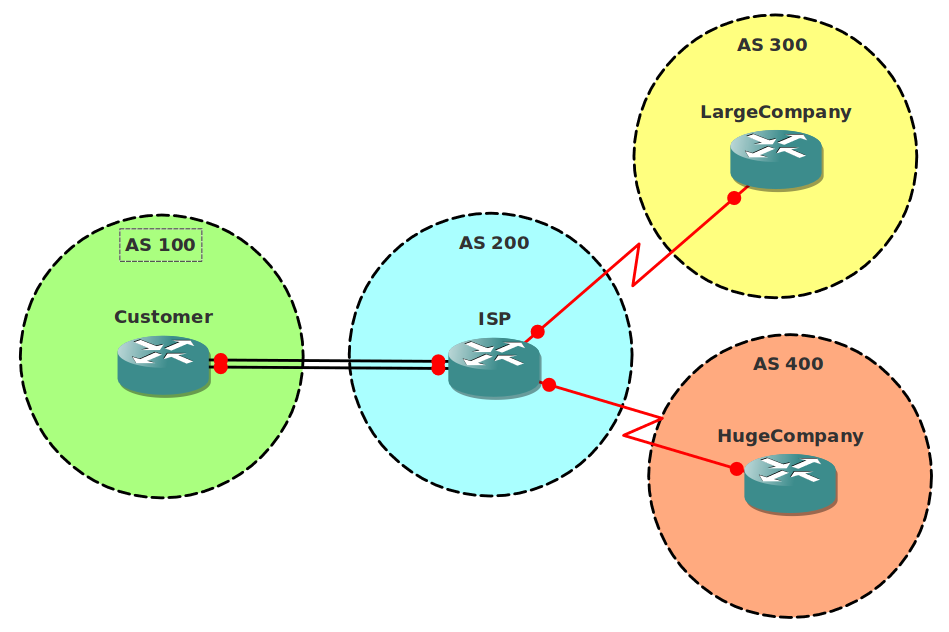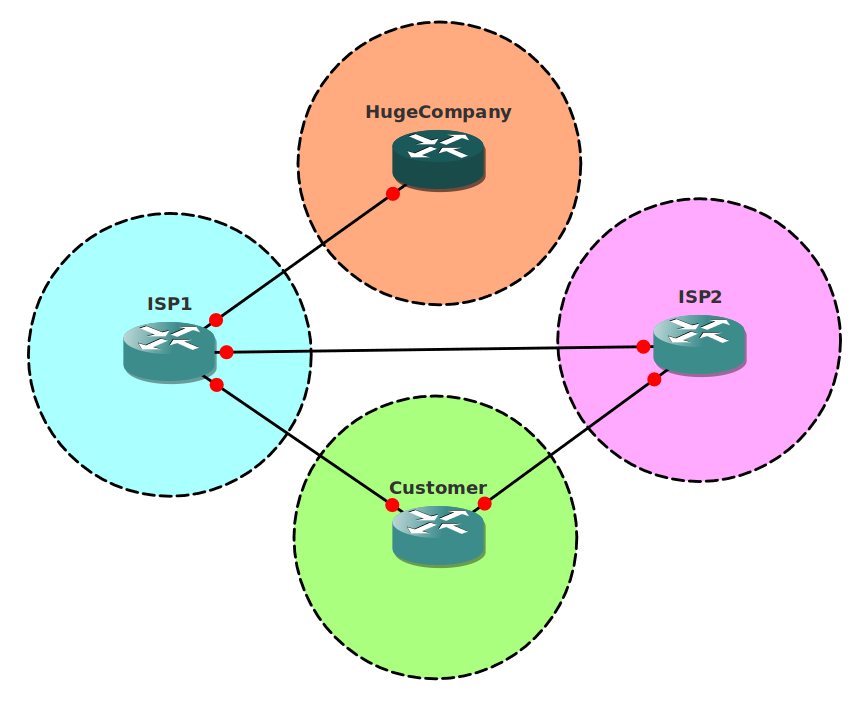Why do we use BGP?
If you are studying for your CCNP after getting your CCNA you’ll probably see BGP for the first time.
In this article i’ll explain to you why we use BGP.
If you are unsure what BGP is or how it works i’d suggest to read my BGP for Beginners article first.
You probably have an idea of how BGP works, how to configure it but you are unsure why you should use it.
We’ll walk through a number of scenarios and look at the advantages.
Look at the picture above, there’s a customer network at AS 100 and the ISP is in AS 200.
There is only a single connection to the ISP so in this scenario it makes no sense using BGP, just advertise a default route in your IGP and you are good to go.
There’s only 1 exit path…
In this scenario we have 2 links to a single ISP.
Is it any good to run BGP here?
Let’s take a look at the options that we have:
- Advertise a default route in your IGP for a single link, traffic will only be sent down this link.
- Advertise a default route in your IGP for both links with an equal metric.
- Both links will be used and you’ll have 50/50 load balancing.
- Run BGP and be able to load balance in any proportion you like.

Everything behind the ISP network was a “blind spot” for us, we had no idea what networks were out there since we were only using a default route.
With BGP we will receive all the different prefixes out there and you will also see in which AS they are.
Path manipulation is easy with BGP since we have a rich list of “Attributes” to play with.
By using BGP you have more control over your load balancing.
Traffic heading for network “LargeCompany” could be sent down the first link and traffic towards “HugeCompany” down the other link.
There’s no way to manipulate on this level using an IGP since you have no idea what is behind the ISP network, with BGP we do!

When you are “dual-homed” to 2 ISPs BGP will make even more sense.
Our customer is connected to 2 different internet service providers.
Because we use BGP we get to see all the AS’es systems out there and the different prefixes within the AS’es.
If our customer router would send traffic meant for the LargeCompany AS towards ISP2 than ISP2 will have to forward it to ISP1 since there’s no direct link between ISP2 and LargeCompany.
With BGP we can see this so maybe it’s better to use ISP1 to get there.
I hope this gives you some insight why to use BGP.
Basically it all boils down to this:
“The more you know, the better off you are”
Well this doesn’t always apply in life but for BGP it does!
If you have more complete routing information you can make better routing decisions.
I’m looking forward to hear your thoughts or questions, please leave a comment below if you want to share something.
Do you want your CCNA or CCNP Certificate?
The How to Master series helps you to understand complex topics like spanning-tree, VLANs, trunks, OSPF, EIGRP, BGP and more.
Written by René Molenaar - CCIE #41726
Check out this website for more IT tools and info.
https://itexamtools.com/
-----------------------------------------------
Check out our blog for all valuable IT knowledge
https://itexamsusa.blogspot.com/
----------------------------------------------
Join us on Medium
https://itcertifications.medium.com/
-----------------------------------------------
Join us on Linkedin
https://www.linkedin.com/showcase/itexamtools-online-it-courses
Learn More...


Comments
Post a Comment